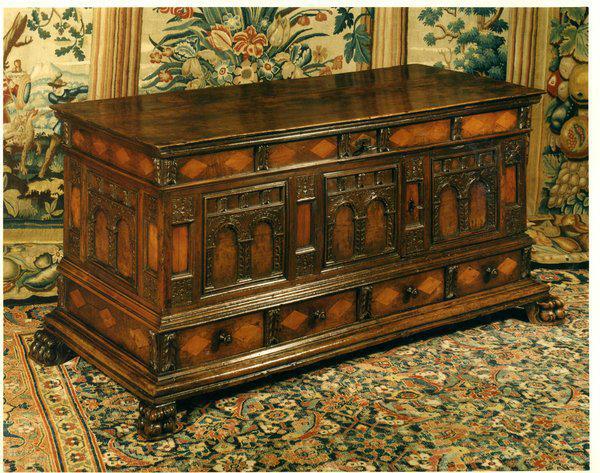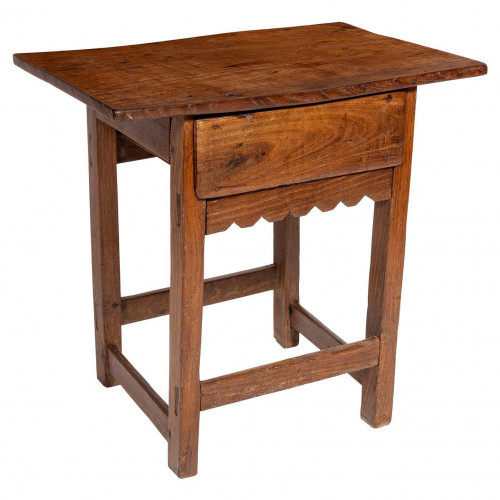A rare, late- 16th century, carved & inlaid, Spanish, walnut, chest
10360
The plank top with a small splice to shrinkage, and a repair to the front left corner, and faced with a deep moulded edge. The replaced hinges supporting a lid with the underside decorated with two arcaded panels with carved acanthus leaves. Three smaller panels interposed, containing panels with yew inlay headed by carved leaves. The underlid removed, the working lock 18th century. The internal box compartment containing three drawers with carved acanthus leaves and faced with a moulded edge, the knobs replaced. The frieze door with original, working lock and hinges and decorated inside with a repeat of the exterior inlaid and carved decoration. The upper, frieze tier decorated with five panels inlaid with diamonds of yew and faced with carved acanthus leaves and a moulded edge. The iron escutcheon original. The main, frieze tier decorated with three moulded panels containing carved, double, arcading. Four smaller panels interposed, containing inlaid panels of yew headed by stylized carved leaf carvings. The lower, frieze tier with two drawers, each with four panels decorated in repeat of the upper tier decoration, and faced with a carved moulding. The locks removed. The sides decorated with a single, panel repeat of the front decoration. Standing on hairy feet. Excellent original colour and patina. Spanish, fourth quarter of the 16th century.
80901227.
16th Century
1575
Walnut
Spanish
World Furniture figure 190 in the collection of the Museo de Artes Decorativas, Madrid. Hispanic Furniture, No 59 in the Pueblo I Indian Arts Commerical Collection. El Mueble en Espana Siglos XVI-XVII, figures 58 & 59.
The 16th century was Spain's Golden Age, largely due to two long reigns (Charles V (1516-66) and Philip II (1566-98) providing a solid structure for both patronage and artistic development to flourish. Exhuberant ornament derived from Renaissance motifs embellished architecture and objects. This piece is typical of the period with its classic Renaissance design in the form of double arcading in three panels across the front, the panels separated by two vertical sections. The quality of design of form and ornament, and workmanship, are outstanding. The quality of the piece has undoubtedly served to protect it over the years, since it has survived in excellent condition. The colour and patina have matured to an excellent quality over time. .











